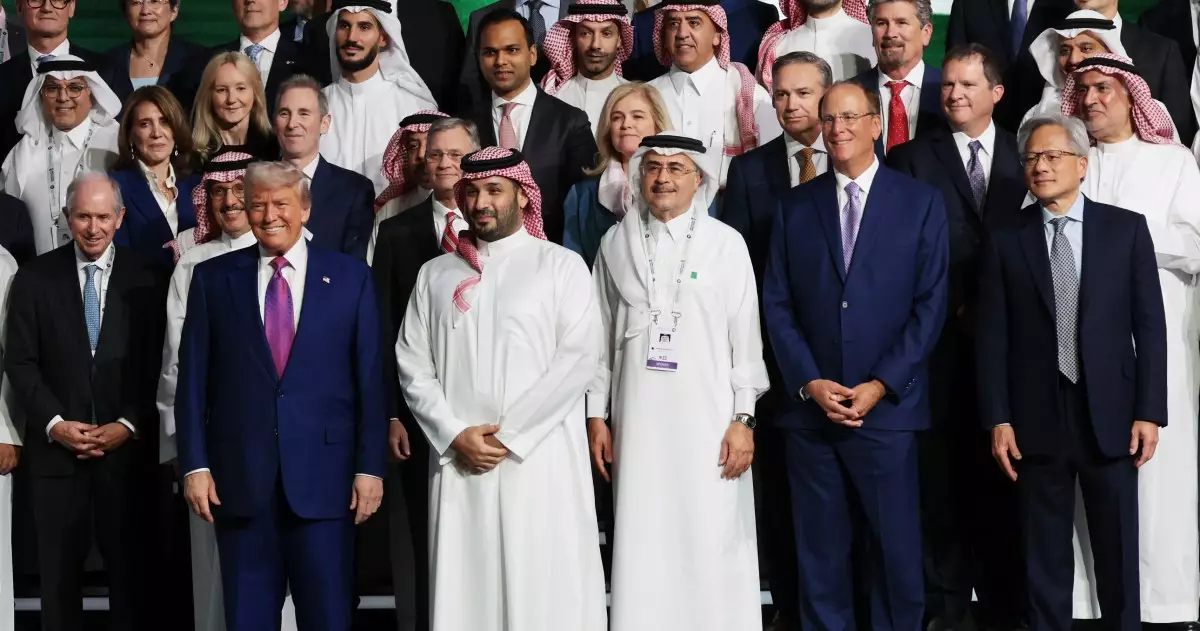Nvidia, the titan of artificial intelligence (AI) chip production, is maneuvering through a landscape shaped by political winds, where strategic relationships are pivotal for success. The recent lifting of export limits on AI chips by the U.S. reflects the intricate dance between technological innovation and governmental interests. This shift arguably cements Nvidia’s stronghold in the AI market, further solidifying its position as a leader backed by both market share and favorable policy changes.
The timing of these export policy revisions is noteworthy. They coincide with Nvidia CEO Jensen Huang’s engagement with former President Donald Trump in Saudi Arabia, signaling a harmonious alliance that extends beyond commercial interests. Such interactions not only highlight the interconnectedness of high-tech companies and national political agendas but also raise questions about the ethical implications of corporations shaping public policy for competitive gains.
The Elimination of Regulatory Barriers
The recent rescinding of the Artificial Intelligence Diffusion Rule by the U.S. Department of Commerce (DOC) underscores a significant strategic victory for Nvidia. Originally established to impose restrictions on the export of U.S.-made AI chips, this rule threatened to cool the fervent innovation in the sector. By dismantling this regulatory barrier, the DOC has effectively allowed Nvidia to retain its stranglehold on the AI chip market, which experts estimate to be nearly 90%. This shift not only empowers Nvidia but also elevates the importance of U.S. technology on a global stage.
The DOC’s assertion that the previous rule could have stifled innovation resonates deeply within the tech community. Regulations designed with protective intentions can often become shackles that limit growth and creativity. The acknowledgment that the AI Diffusion Rule could have harmed diplomatic relations signals a realization that technological supremacy and international collaboration must move hand in hand. As geopolitical tensions simmer, the willingness to prioritize innovation over isolationist policies may prove to be a pivotal turning point in Silicon Valley’s ongoing saga.
The Competitive Landscape: A Two-Front Challenge
However, the thrill of victory could be short-lived. The same geopolitical concerns that have benefitted Nvidia also present looming threats, particularly from Huawei’s burgeoning AI technology. The U.S. government has drawn a hard line against the use of Huawei’s Ascend AI chipset, citing export control agreements. This defensive strategy illustrates a dual approach: bolster domestic industry while simultaneously undermining foreign competitors.
Nvidia’s swift response when faced with the AI Diffusion Rule speaks volumes about its ability to navigate regulatory minefields. Huang’s criticism of the rule as “misguided” captures a proactive stance that is critical for any tech company aspiring to maintain dominance. There is no denying that the absence of stringent regulations grants companies room to maneuver; however, one must wonder if this will only defer the inevitable tit-for-tat responses from nations eager to back their own tech firms.
A Tech Sphere Crowded with Entourage
The spectacle of tech executives, including Huang, mingling with Trump at a Saudi investment summit presents a peculiar tableau of influence. These gatherings illustrate a broader narrative where tech moguls wield an extraordinary degree of influence within the political arena. The question arises: Are these alliances genuinely fostering innovation, or are they merely facilitating a monopolistic environment where a few players shape the course of technological advancement for their own ends?
When we scrutinize the guest list at such events, it is evident that the modern tech landscape is not just defined by products but also by powerful interconnections between political leaders and business magnates. Whether this symbiotic relationship ultimately serves the best interest of the public, or just a select few, remains a profound concern. The actions of these individuals impact not just market dynamics but, indeed, the societal landscape, molding how technology interacts with everyday life.
In this evolving saga, Nvidia is clearly positioned to capitalize on its advantages, but the repercussions of its actions on global markets, competitors like Huawei, and diplomatic relationships cannot be underestimated. The future of AI technology innovation is certainly enticing, yet fraught with complexities necessitating careful navigation.


Leave a Reply